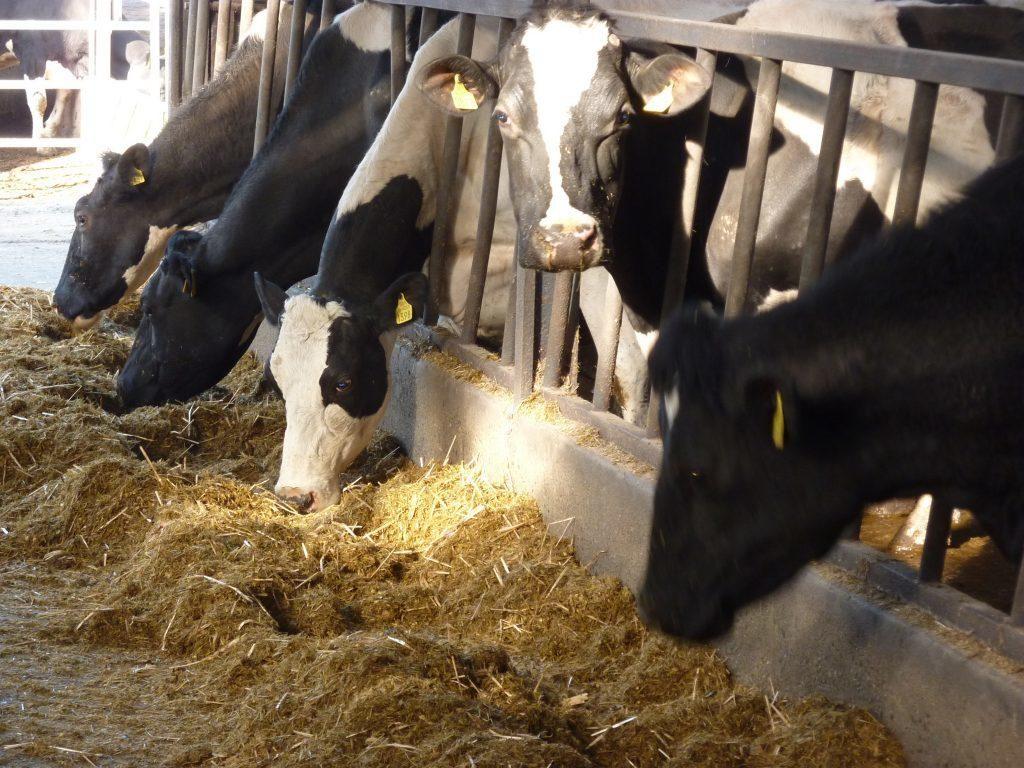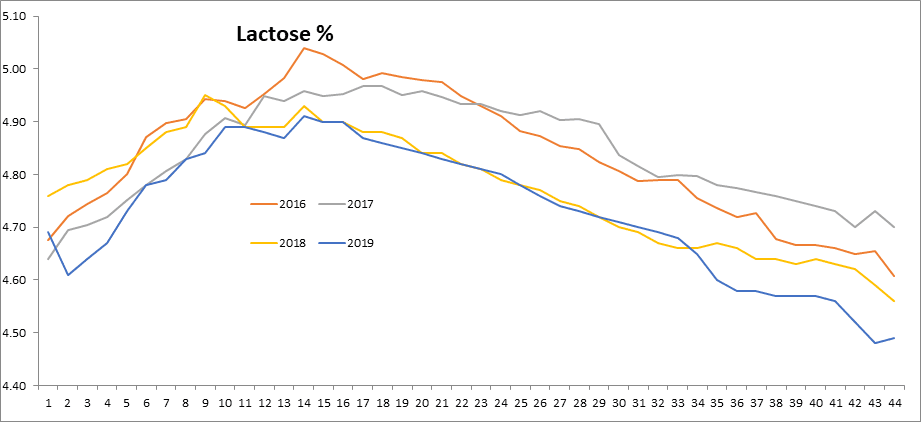Get a 24 hour weather forecast

Maintaining milk lactose
Milk lactose is lower this year than previous years. Milk lactose is affected by stage of lactation and energy nutrition. Despite the good grass growth lactose is mirroring 2018, a very poor grass growing year.
Drying off
Cows yielding less than 10-12ltrs will have a negative effect on bulk tank lactose %.
Drying off these lower yielding cows will lift lactose.
OAD
Milk cows once a day has a negative effect of bulk tank lactose %.

Reasons for low lactose:
– Low energy intake.
Autumn grass is generally lower in DM, sugar and UFL than summer grass. As we move into the autumn more concentrates are required for the same level of production as is required by summer grass.
Higher levels of concentrate feeding alone are no guarantee of high levels of energy intake or milk lactose %. Higher levels of concentrates must come in conjunction with an overall higher daily intake.
For example:
From the table below farmer B is feeding 3.5kg more concentrates to his cows than Farmer A but he is allocating 6kg DM less grass daily. His cow’s total daily intake is 23% lower (16.2kg DM daily vs 13.2 kg DM daily)
and energy intake is 24% lower (15 UFL vs 12.9 UFL) than farmer A. Farmer C has bridged the gap by introducing some grass silage (4kgDM silage per cow = 1 round bale per 50 cows).

Possible diets and margin over feed costs (0 BCS gain or loss):


*Allow for 0 BCS change, if your cows need to gain 0.25 BCS add 1kg of concentrates to the recommended rate.
Grass UFL (DM)= 0.9, Silage UFL (DM) = 0.78 (70 DMD), Concentrates UFL = 0.95. Milk value 40c/ltr to reflect solids